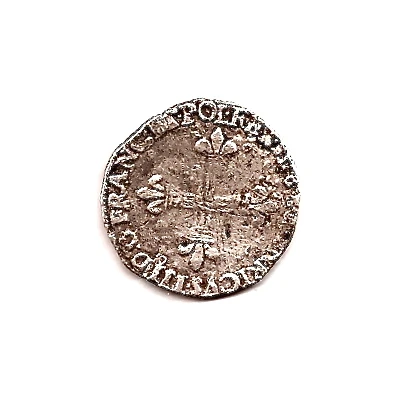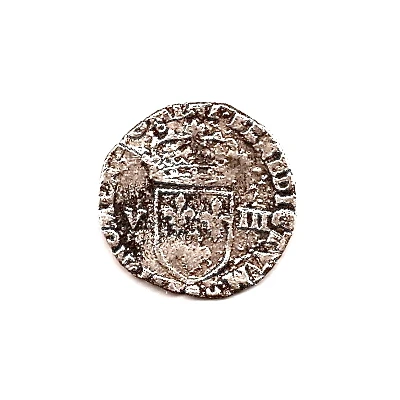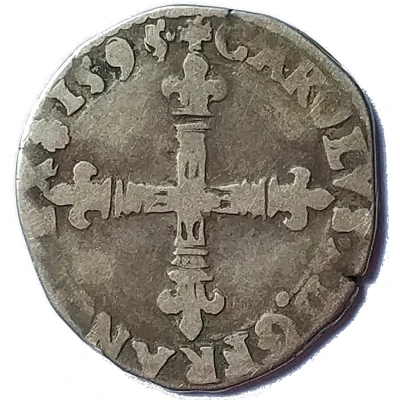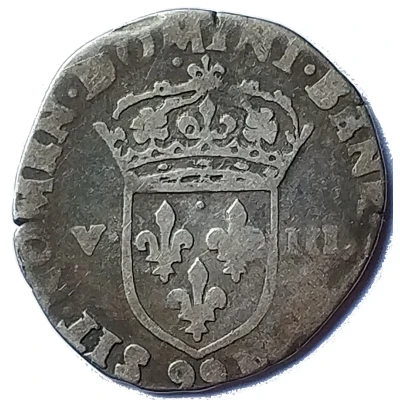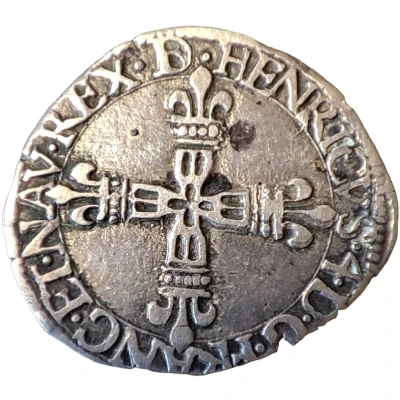
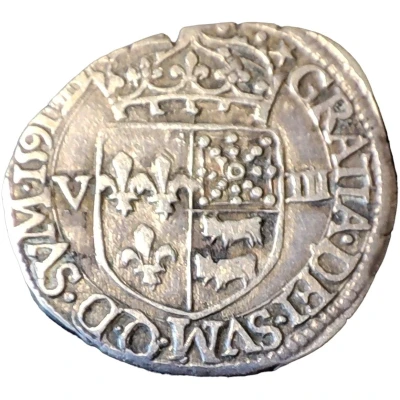

© Yannick Roszak
⅛ Ecu of Bearn - Henry IV
| Silver (.917) | 4.75 g | 25 mm |
| Issuer | France |
|---|---|
| King | Henry IV (Henri IV) (1589-1610) |
| Type | Standard circulation coin |
| Years | 1589-1610 |
| Value | ⅛ Silver Ecu |
| Currency | Livre tournois (1204-1795) |
| Composition | Silver (.917) |
| Weight | 4.75 g |
| Diameter | 25 mm |
| Shape | Round (irregular) |
| Technique | Hammered |
| Orientation | Variable alignment ↺ |
| Demonetized | Yes |
| Updated | 2024-10-04 |
| Numista | N#346050 |
|---|---|
| Rarity index | 93% |
Reverse
Crowned arms of France, Navarre and Béarn.
Script: Latin
Lettering:
Plusieurs variantes:
★ GRATIA. DEI. SVM. Q. D. SVM. 1591 D ★
★ GRATIA. DEI. SVM. ID. Q. SVM. 1607 ★
Comment
Identifying the workshops for this type is often complex. It should be noted that the only difference is the quality of the striking: hammer striking for Morlaàs, pendulum striking for Pau. To identify the workshop of your piece, refer to the vintage (if only one workshop exists); otherwise, observe the quality of the striking. Note that the blanks resulting from these strikes are often wider and more regular for the Pau workshop than for the Morlaàs workshop (if there has been no filing).Interesting fact
One interesting fact about the ⅛ Ecu of Bearn - Henry IV 1589-1610 from France is that it was minted during a time of great economic and political change in France. Henry IV, who ruled from 1589 to 1610, was the first French monarch to issue a standardized coinage that was accepted across the country. This coin, made of silver (.917) and weighing 4.75g, was part of a broader effort to stabilize the French economy and promote trade. It features an image of Henry IV on one side and the coat of arms of Bearn on the other. Despite its small denomination, the ⅛ Ecu was an important part of everyday transactions in 17th century France, and its design has been celebrated for its beauty and historical significance.
